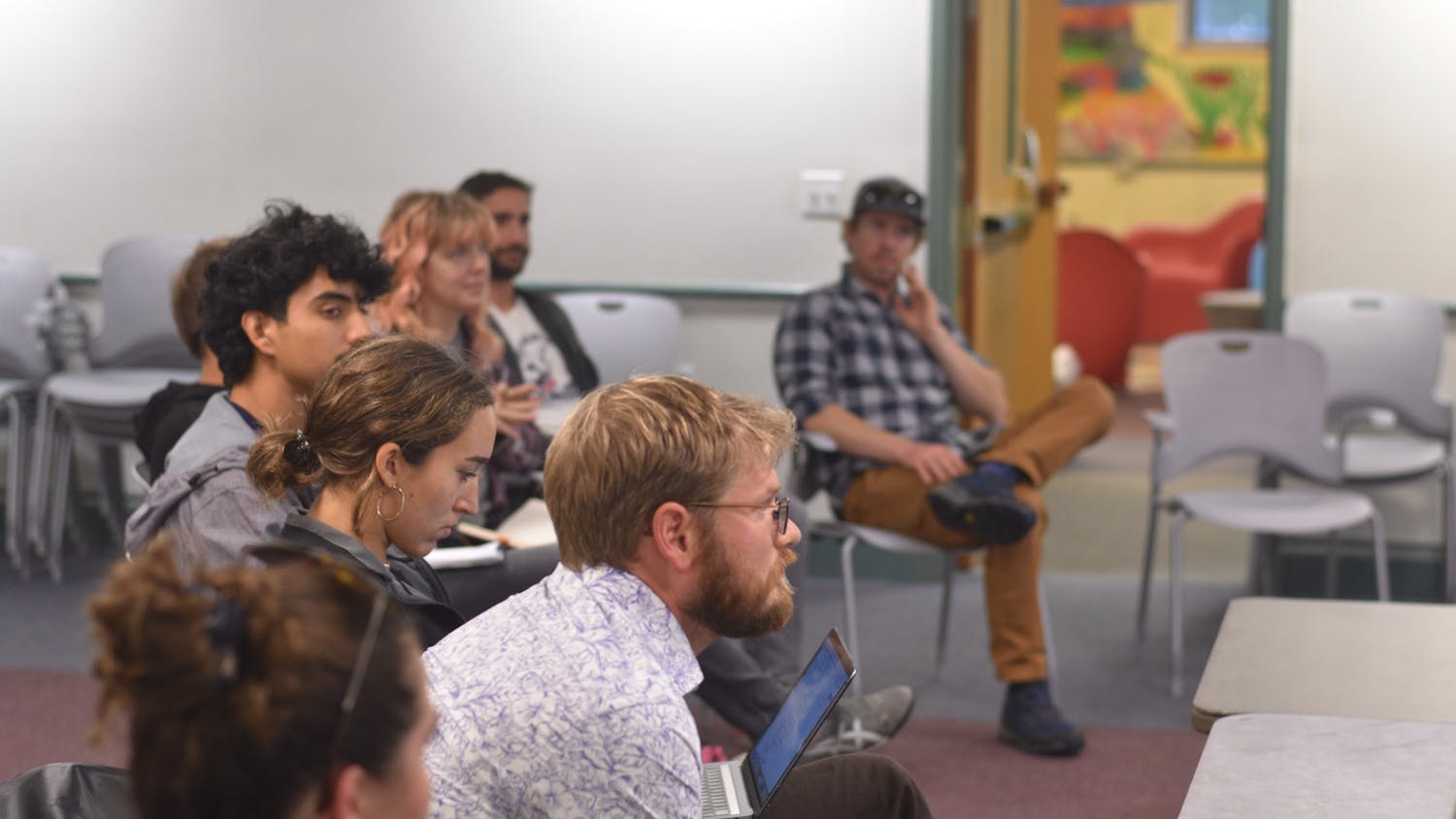On a recent mid-September afternoon, I biked up to Wright Park to join Middlebury-based mycologist Meg Madden on one of her mushroom walks.
Cars trailed into the Wright Park parking lot, the drivers greeting each other and Madden for the walk.
Madden introduced herself and brought out a basket of mushrooms she had grown in her garden. As we passed the deep red-brown caps around the circle, Madden said she anticipated many fungi sightings on our two-hour walk.
“It’s been a good week,” Madden told the group. “[The] right amount of rain and the right temperature.”
With that, we set off into the woods under an overcast but bright sky. Every few minutes, Madden stopped the group to point out a wide array of mushrooms — little yellow jelly babies, poisonous lilac fibrecaps, tiny blue cup mushrooms growing from a log and a milky white lion's mane resembling a stalactite.
Madden bent down to pick one or two of each species and pass it down the group. So-called “chicken fat” mushrooms left our hands sticky with slime, while indigo milk cap mushrooms stained our fingers a deep blue. At the same time, Madden explained to the group fungi cell structures, life cycles, and their roles in the ecosystem.
From early summer through autumn, Madden leads these mushroom walks approximately once a week all over Vermont. Each walk is sponsored by a different organization in the state; this particular walk was sponsored by the Middlebury Natural Foods Co-op.
“I first started doing walks because I also really love teaching,” Madden told The Campus in a phone interview. “I love introducing people to mushrooms and fungi and just nature in general. That’s a huge driver for me.”
Madden began learning about fungi following the onset of the Covid-19 pandemic.
“School was closed, and my daughter was home, so we started going in the woods by our house every day, starting in the middle of March,” Madden said. “I think I first became interested in mushrooms visually, because they're so beautiful.”
Madden recalled taking pictures of the mushrooms she found and posting them on her Instagram account, @megmaddendesign, which eventually started getting more attention.
“My science brain needed to know what I was finding,” she said.
Using the app iNaturalist, Madden is currently working on creating an atlas of all the species of fungi found in Vermont. iNaturalist lets users input geographical information and photos of their finds to identify fungi species. Madden’s project on the app, called Fungi of Vermont, is currently collecting fungi observations from users across the state.
“The more people that are out there, looking for them and documenting, the better, because I can't be everywhere all the time,” Madden said. “I think that community science is a powerful tool.”
She said she hopes the project will be able to collect observations of rarer fungi that may be under-reported. Often, eye-catching or edible mushrooms have more recorded sightings, while other species may not be captured nearly as much, or even at all, thus giving an incomplete picture of Vermont’s fungi diversity. Madden said two species of which she has the only sightings in Vermont on iNaturalist are the pink waxcap (Porpolomopsis calyptriformis) and purple edged lute (Callistosporium purpureomarginatum).
Madden said she also hopes the atlas will be helpful when Vermont begins to create an official state fungi list, which it does not yet have.
“The funding isn't there on the state level at this point yet to officially be creating a state list. But the atlas project I think is going to be important, too, for when that can happen on a more official level,” Madden said. “If there was a list, we could start to get a better idea of diversity, but also rarity and things that are endangered. There's really no idea of that at this stage.”
As part of her effort to create the atlas, Madden has gotten in touch with Middlebury’s student mycology club, MiddMyco. They will join her for a BioBlitz on Saturday, Oct. 15 — an event documenting as many species as possible within a specific area at a certain time. This BioBlitz is sponsored by Middlebury Area Land Trust (MALT) and the Ilsley Library.
“People will be photographing the mushrooms that they find, uploading them to iNaturalist, and they'll go into a project on iNaturalist that is a BioBlitz-specific project for Wright Park. Then that will give us a snapshot, basically, of the fungal diversity in that location in that time period,” Madden said.
MiddMyco was founded in the spring of 2021 by Sloane Parker ’22 and Gus Hearn ’23. Chad Kim ’23.5 is the club’s current president.
“The next few meetings will focus more around events that [Madden is] sponsoring,” Kim told The Campus. “Hopefully, we'll be talking more with her and collaborating too.”
Aside from joining Madden on these events, Kim said that he is still in the process of fully solidifying projects and plans for MiddMyco.
“I think we're most likely going to try to grow some oyster mushrooms and hopefully involve everyone with the inoculation process to see how the mycelium colonizes. And then we can eat them,” Kim said. “We'll also do some art projects, and some microscope work. It's just a very all-encompassing field. That’s why we're trying out all these different ideas this year to see what sticks and what we want to do next year. It's not really a set structure.”
MiddMyco’s faculty advisor, History Professor Louisa Burnham, helped to connect Madden with the club. “She was one of the first people I met in Vermont 20 years ago, when I moved here, even before I met most of my colleagues,” Burnham told The Campus. “And she ended up becoming a friend.”
In the future, Madden said she hopes to see more official support for fungi research from the state of Vermont.
“As far as the fungi work goes, it's obvious that the need is there. And it's being acknowledged at the state level. It's just a matter of figuring out how to go about getting the funding for it,” she said.

![Madden with a Hen of the Woods [grifola frondosa] mushroom](https://snworksceo.imgix.net/mbc/e87e6aef-5e9b-4be7-a5fe-31b2a0d8bdab.sized-1000x1000.png?w=1000)


